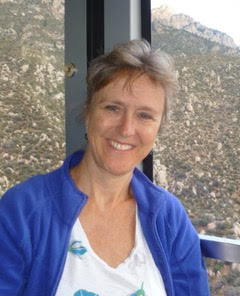Bringing the light into a dark world
In a recent meeting of the Arizona Interfaith Movement (AZIFM), we were discussing the themes of light and darkness in different religious traditions. In the winter season, there is Diwali, the Festival of Lights, from the Hindu tradition and the light associated with the Christmas season and Christ being “the light of the world.” On a more philosophical level, there’s mention too, in many scriptures, about the contrasts between light and darkness and what these words symbolize.
This discussion got me thinking about references to these terms in my own tradition of the Bahá’í Faith. It turns out that they are mentioned over 250 times in our writings, per a quick online search of the Bahá’í Reference Library.
There are references to God’s light coming at a time when darkness has overspread the world; how humanity cannot always discern light from darkness or guidance from error; and that God’s purpose in sending His Prophets at different times throughout history is to turn humanity from the “darkness of ignorance” to the “light of true understanding.”
Bahá’u’lláh, an Arabic title meaning the “Glory of God” and the Prophet-Founder of the Bahá’í Faith, further comments on the darkness of vain imaginings vs. the light of certitude; the darkness of separation vs. the the light of unity; and the darkness of abasement vs. the light of glory. And, there is imagery in the physical realm too, e.g. darkness is associated with density while light is associated with ascent.
One of my very favorite books in the Bahá’í writings is “The Seven Valleys,” a mystical work that unveils the different stages that one must go through to cleanse or purify the soul and draw nearer to the divine. As the seeker travels from the first Valley of Search into the second Valley of Knowledge, the goal is to pass from darkness to light. The text says: “And if, confirmed by the Creator, the lover escapeth the claws of the eagle of love, he will enter the Realm of Knowledge and come out of doubt into certitude, and turn from the darkness of wayward desire to the guiding light of the fear of God.”
‘Abdu’l-Bahá, another central figure in the Bahá’í Faith, alludes to darkness in the human realm like disunity, war, and prejudice – as compared, for example, to the lights of unity, peace, and love. These opposing images and themes run throughout the Bahá’í writings, although ‘Abdu’l-Bahá also describes darkness not as an entity in itself, but as the absence of light. That’s a subtle but interesting distinction.
Finally, in looking at our propensities to follow one path or the other, ‘Abdu’l-Bahá says, “Every child is potentially the light of the world – and at the same time its darkness; wherefore must the question of education be accounted as of primary importance.” He goes on to talk about the vital role of spiritual education. Spiritual education, he adds “is the light of the world of humanity” and its “absence in the world is darkness itself.”
As we physically start leaving the darkness of winter – and perhaps a spiritual winter – the writings of the Bahá’í Faith may shed some light (pun intended) on the deeper meanings behind these material concepts.
Zarrín Caldwell is a member of the Baha’i community and currently produces podcast on humanity’s spiritual heritage.” The Soul Salons: Exploring our Spiritual Heritage”

Faith Matters
Zarrín Caldwell Guest columnist
PART OF THE USA TODAY NETWORK Copyright © 2021 The Arizona Republic 2/3/2021

